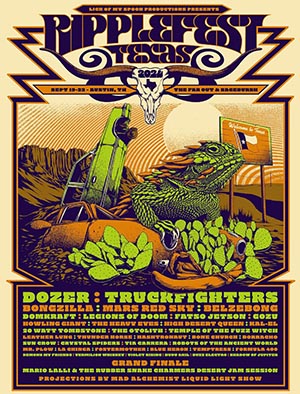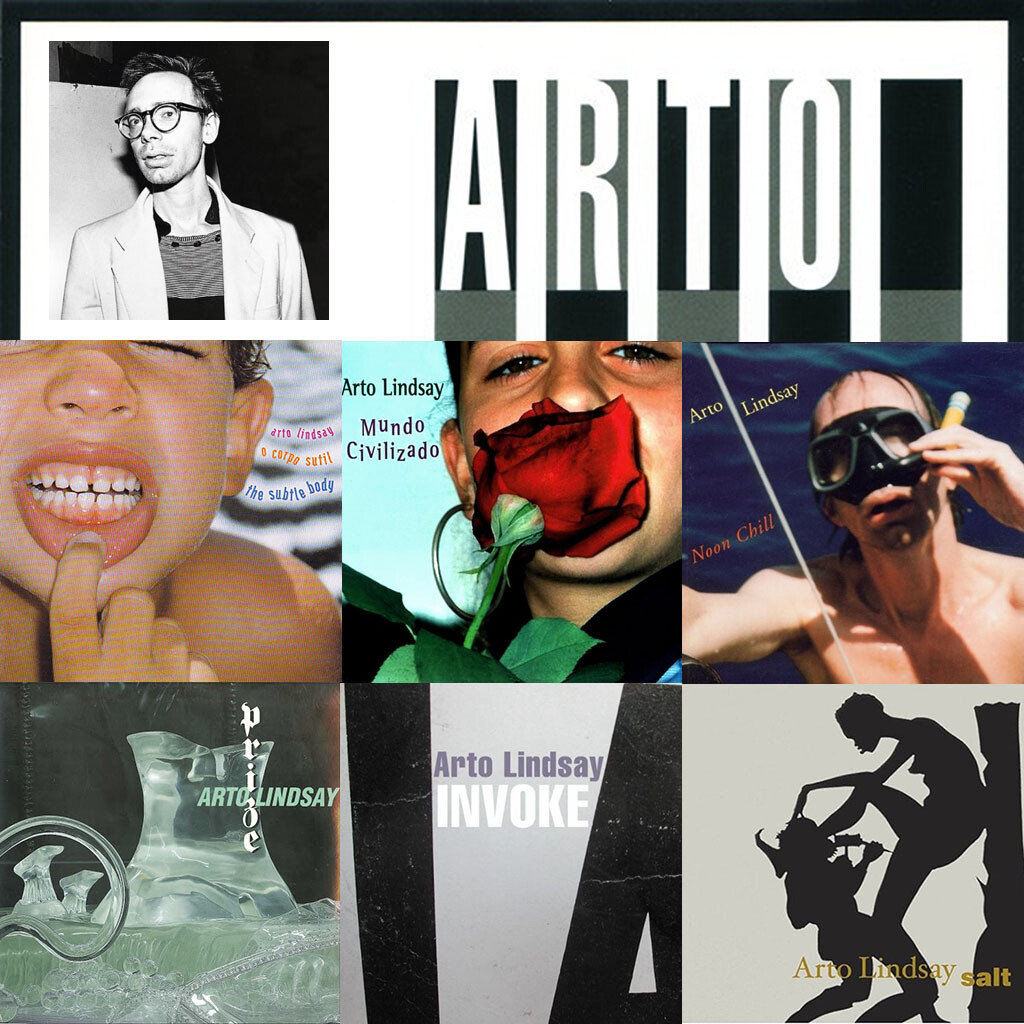
One of the key players of the New York avant rock scene with no wave pioneers DNA, fake jazz The Lounge Lizards, new wave art funk Ambitious Lovers, Arto Lindsay is an American success story (though raised in Brazil) of how a non-musician can become one of the most important post-punk players in New York. His percussive, untuned guitar became his unique signature, along with his untrained voice.
His best work, however, might be his run of six albums from 1996 to 2004 where he returns to his Brazilian roots and becomes pretty much a bonafide post-bossa nova/Nova MPB crooner. Lindsay of course gives the music his own distinctive twist with occasional guitar skronk, and prominent guests from his avant rock past such as Ryuichi Sakamoto, Marc Ribot, Brian Eno, Bill Frisell, John Zorn, Melvin Gibbs, Nação Zumbi, Animal Collective, and more. While just about every album made my Lucky 13, they’re all now out of print and seemingly forgotten. It’s enough to make me second guess myself and wonder if I overrated them. Lindsay is certainly a quirky musician who’s Brazilian music may not quite reach the heights of prime Caetano Veloso or Tom Zé, but at the time provided an uncluttered bridge between modern Brazilian music and arty downtown New York cool. His creativity influenced adventurous young players such as Moreno Veloso +2 and Lucas Santtana.
After 13 years, he finally issued a new solo album in 2017, Cuidado Madame (Northern Spy). It gets impressively close to the magic of Lindsay’s previous six album run.
Even better is his most recent project, a co-production of Thiago Nassif’s second album, Mente, just released last Friday, where he played a more active role in contributing vocals, guitar and songwriting. It’s the best thing he’s been involved with since Salt (2004), and the fiercest fusion of raging no wave with Brazilian art pop and it’s rich traditions (samba, bossa nova, Tropicália, MPB).
I’m sure someday his six album run will be reissued, and Lindsay will enjoy a critical resurgence, especially with his involvement in the Nassif album. Those who know where to dig can find ’em. The blurbs below are mostly drawn from what I wrote about them at the time, hence some repetition and youthful hyperbole.
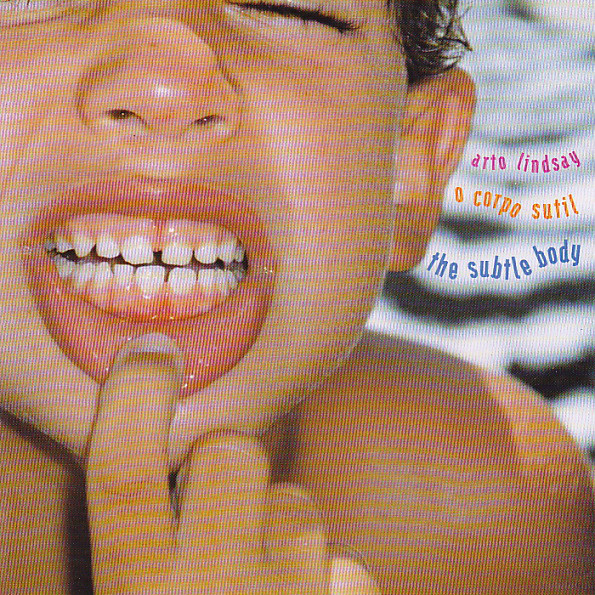
O Corpo Sutil (The Subtle Body) (Bar/None, 1996)
Lindsay has been increasingly referencing his Brazilian roots since Ambitious Lovers, though Aggregates 1-26 (1995) was largely a return to DNA’s no wave skronk. O Corpil Sutil was originally released on Ryuichi Sakamoto’s Japanese label Gut in 1995. He explores bossa nova and sambas, such as the cover of Antonio Carlos Jobim’s “Este Seu Olhar,” while also adding his own art rock flavor via guests Sakamoto, Eno, Bill Frisell and Marc Ribot. Sakamoto contributes piano to album highlight “Child Prodigy,” while the delicate “Unbearable” includes sampled effects from Yuka Honda and Towa Tei, while “4 Skies” and “Enxugar” feature Eno “sonics.” Overall The Subtle Body provides some chilled out music perfect for lazy summer days. Arto at his most alluring and accessible.
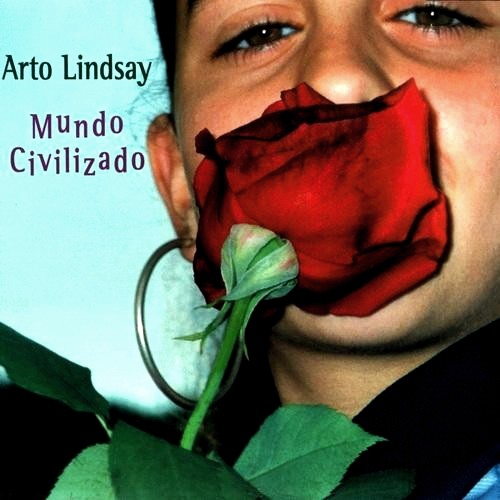
Mundo Civilizado (Bar/None, 1997)
Yet another sexy album, this this one goes for a more tropical, breezy, acoustic sensuality. Yet there is also an underlying tension threatening to either break the music apart or boil over. Perhaps it’s becuase of Lindsay’s background in the late 70s/early 80s, chaotically noisy New York “no-wave” group DNA. His notoriously unhinged passion is now under tight control as he revisits the more traditional acoustic music of his birthplace, Brazil, and updates the innovations made by Tropicália pioneers like Caetano Veloso, Gilberto Gil and Jorge Ben. Measure the uniqueness of his vision with his two brilliant covers — one of Al Green’s gently smoking “Simply Beautiful,” the other a version of Prince’s “Erotic City.” The Brazillian sensibility puts them through a subtle filter, but enriches them just the same. On top of that, Lindsay makes strikingly original use of drum ‘n’ bass rhythms on other tracks. If that appeals to you the most, see also this year’s Hyper Civilizado, a forward looking remix album that features Illbient players DJ SPooky, Sub Dub and We. If you prefer the traditional Brazillian sounds, check out his first solo album, O Corpo Sutil (The Subtle Body) and hope he comes up with a brilliant third album soon!
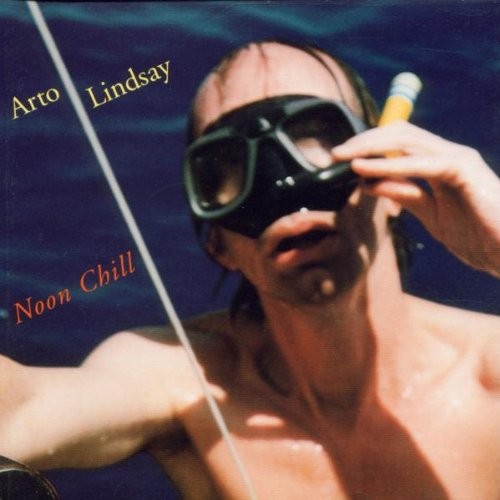
Noon Chill (Bar/None, 1998)
In 1997 Arto Lindsay made a big critical splash with the one-two punch of Mundo Civilizado and the remix album Hyper Civilizado. Noon Chill confirms that he’s on a creative roll. With career-stalling two and three year periods of dead air becoming all too common, it’s refreshing to see someone crank out albums every year for a change. On this album, Lindsay turns up the acoustic, relaxed tropical warmth of the previous album to a scorching, funky jungle hoedown. He features pretty much the same all-star band, including bassist Melvin Gibbs, legendary jazz percussionist Nana Vasconcelos, Vinicius Cantuaria and guest singer Sussan Deyhim. Rather than just a group of sidemen, they have truly gelled into a bona fide band, completely in sync with each other. His production work with Carlinhos Brown’s alfaGAMAbetiZADO must have inspired him to add much sassier rhythm arrangements. This is Lindsay’s career masterpiece. Here’s hoping he takes his hot band on the road and tear the roof off the mother earth.
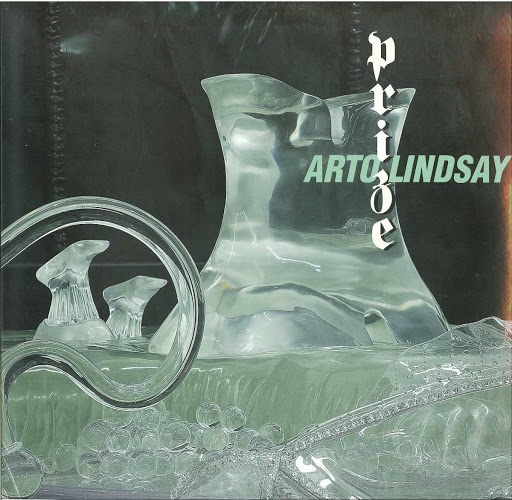
Prize (Righteous Babe, 1999)
With his fourth album to explore bossa nova, samba and their variations, one might suspect Arto Lindsay is at a creative plateau. But with the only higher plateaus found in upper Mongolia, that isn’t a bad place to be. While broadening the variety of instruments and recording techniques, Lindsay keeps his eyes on the prize (har!) and focuses the music tighter than a duck’s butt. While drum ‘n’ bass rhythms were sprinkled on his last couple albums like salt and pepper, Prize tattoos the breakbeats into its luminous, cool pale skin. While it lacks any surprising covers of Prince or Al Green, the album manages to build upon the classic bossa nova songwriting mastery of Lindsay’s Brazillian predecessors Caetano Veloso and Vinicius Cantuaria and actually surpass their current albums. Underneath the near-perfect songs is a lot of tension. His ace band simmers with Melvin Gibbs’ spare funk bass, and a slew of acoustic percussion by Davi Moraes, until Lindsay’s jagged electric guitar sputters and breaks the surface for a while to remind you that he used to be one prickly downtown cat in the no-wave days. But soon all you hear is his dry, laconic tenor exuding the warm sensuality that is his personal brand of 90s bossa nova, and remember the sparks as a half-forgotten bump in the dream.
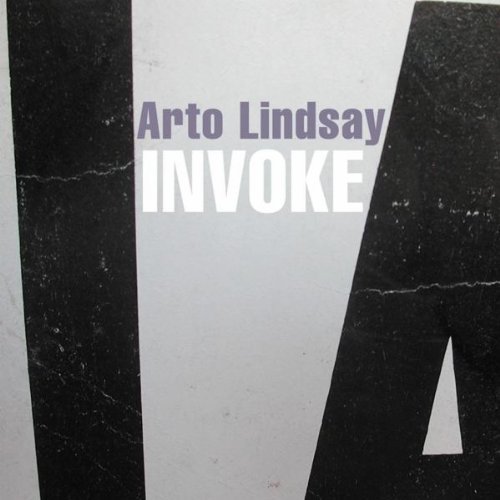
Invoke (Righteous Babe, 2002)
Arto Lindsay should be earning belated hipster points with the no-wave revival currently raging, with his history of leading DNA. Perhaps in another twenty years all the hipster-come-latelys will realize how groundbreaking his fusion of electronica, funk, sambas and bossa nova was, starting with 1996’s O Corpo Sutil and continuing through this year’s daring Invoke.
Arto Lindsay is a national treasure whose music is doomed to be under-appreciated until god knows when. From the pioneering no-wave of DNA to the evocative jazz-noise-funk hybrid trilogy (Envy, Greed, Lust) in Ambitious Lovers, Lindsay was already an underground legend by the early nineties. Invoke is the fifth installment a brilliant series of albums that pay tribute to the fertile creativity of Brazil, where the long time New York resident grew up. Much more than an ambassador/historian of Brazilian bossa nova and Tropicália, Lindsay pushes the boundaries by building on the past with more contemporary influences, and creating a sound that is uniquely identifiable as his own.
Invoke is a departure from its bossa nova-oriented predecessors, incorporating a wider variety of rhythms and sounds. “Predigo” is a collaboration with Lindsay’s favorite contemporary Brazilian band, Nação Zumbi, whose charismatic leader Chico Science was killed in a car crash in 1997. The track is a dizzying mix of Mahavishnu Orchestra-style jazz fusion, hip-hop, funk, distorted guitars and the maracatu rhythm native to the band’s home in Pernambuco, where Lindsay coincidentally also lived. The track follows one of the logical conclusions (or beginnings) hinted at with Lindsay’s work in Ambitious Lovers. “In The City That Reads” is the other big departure. It’s also a collaboration, with a New York group called Animal Collective (Avey Tare and Panda Bear), who contribute ambient sounds and percussion. The invigorating experimentation aside, overall Invoke is much more direct and easier to listen to than recent albums.
Rather than covering Prince and Al Green, in “Illuminated” and “Over/Run” Lindsay subtly incorporates some of the production techniques by mainstream hip hop/soul producers like Timbaland. “Invoke” and “You Decide” buzz and percolate with micro-electronic sound affects, reflecting the glitchy electronica innovations of artists like Matmos (who recently collaborated with Bjork). The rhythm in “You Decide” takes you on a complex, herky-jerky carnival ride that is utterly addictive, so long as you don’t get woozy. “Uma” is based on a sample of tribal drums from the Bahia region, co-written with Brazilian rising star Lucas Santtana. “Clemency” sees Lindsay at his funkiest, and the minor chord string-led “Unseen” at his most menacing. The album closes with a breezy acoustic cover of the 60 year-old “Beija-me.” Invoke takes more risks and is more diverse, and inevitably seems less perfect, particularly compared to the seamless Noon Chill. But by no means is it a disappointment. It’s a step forward and over, with harder edges and a weathered soul. An essential addition to a subtle body of work by an important songwriter at the top of his game.
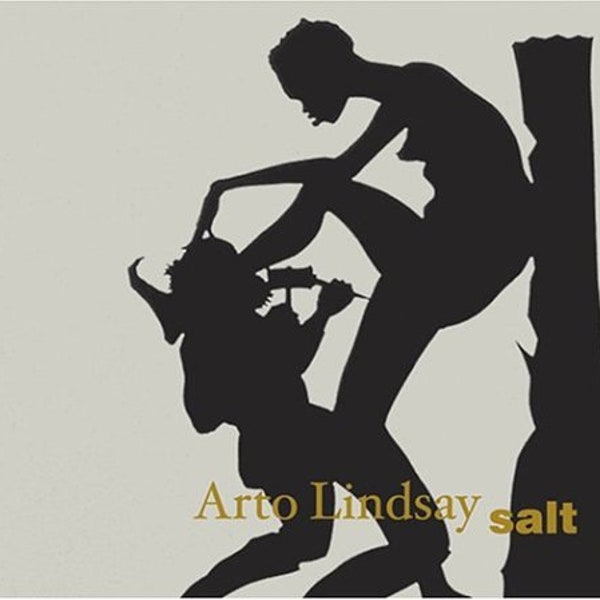
Salt (Righteous Babe, 2004)
Six albums of electronica-laced bossa nova with touches of no wave skronk from a founding king, all equally brilliant, all equally ignored. I guarantee if Arto Lindsay were young, pretty and Williamsburg-hip, he’d be selling ten times as many albums.
Early in Arto Lindsay’s career, he was known for his impatience with convention and tradition, his spastic guitar-playing in the no-wave band DNA being the epitome of unpredictability. His style morphed quickly, and remained ever-changing and dissonant throughout his stints with the Lounge Lizards and Ambitious Lovers. Which is surprising how single minded he’s been for an amazing six album stretch in studying a particular form, albeit in a somewhat fractured, deconstructed form. He loves his bossa nova, and lovingly sprinkles in a touch of skronk and electronica. But experimentalism takes a back seat now to aesthetic beauty, with consistently amazing results. On the surface, Salt might sound like he’s repeating himself, but dig deeper and the variety and evolution is there, but on a subtle level. As the cover art suggests, he continues to deal with earthy sensuality, this time incorporating inspiration from Carnaval, which he participated in. He doesn’t collaborate with as many people this time, but one stand-out is “Into Shade,” written with Brazil’s Lucas Santtana. It’s one of his plushest, and the strings, amazingly, were arranged by Living Colour’s Vernon Reid.

March 29, 2024
Fester’s Lucky 13: 1994
March 11, 2024
Winter Rundown
January 4, 2024
Fester’s Lucky 13: 1989
